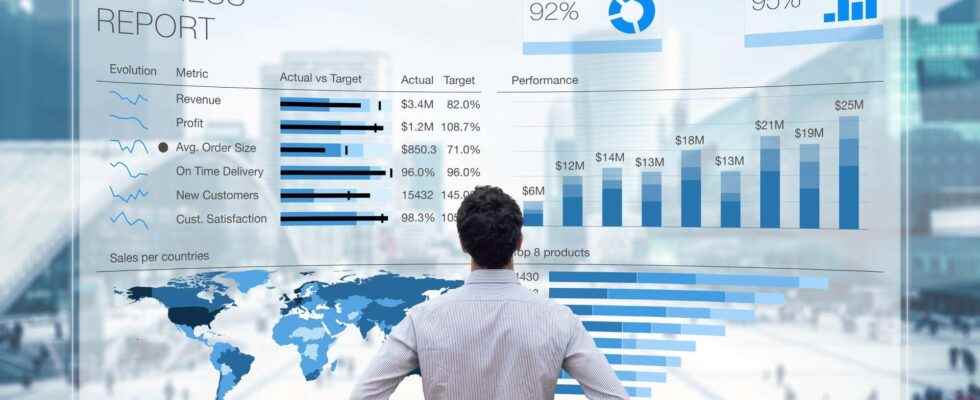As its name suggests, business intelligence designates the IT methods and tools for use by decision-makers in an organization, whether it is a business or an administration. It is translated by Business intelligence or BI; the Business intelligence must contribute to the development of a decision-making project, generally in the form of a Business Plan. It relies on a number of tools: dashboards, cubes and the data warehouse.
Dashboards
The dashboard is certainly one of the best-known tools in business intelligence. He puts in light essential data such as key performance indicators (KPIs) or KPIs (key performance indicator), or the turnover. There are three main types of dashboard:
- the strategic dashboard which contributes to long-term management;
- the budget dashboard (medium term);
- the operational dashboard (short term).
Using cubes and the data warehouse
The cube makes it possible to identify one activity of the organization and only one: ventilation of turnover, subsidiaries, activities, etc. We distinguish :
- indicators that highlight the turnover, transactions, customers, etc .;
- the dimensions or axes of analysis: typologies of products, customers, period, etc.
the Data Warehouse or warehouse of data constitutes a database intended to store information.
What is business intelligence used for?
Business intelligence grew out of business expansion. It must contribute to the development of the decision-making project. It takes into account the growth of volume data and construction of a global project.
The exponential growth of data volumes
In the context of a globalized economy, the volume of data is growing at an exponential rate. Administrations and large companies mass collect. This phenomenon is reflected in lighter structures such as SMEs, VSEs, associations, etc. Business intelligence makes it possible to store them and cross them to facilitate decision-making.
The construction of a decision-making project
There are multiple forms of decision-making projects such as Business Plan that we translate as business plan or business plan. It is also imitated by the administrations.
How does business intelligence work?
Business intelligence must be able to perform a series of functions: data collection, integration, distribution, presentation and administration functions. The task can be particularly complex.
Data collection or datapumping
These are usually ETL tools (extract-transform-load or extraction-transformation-change) which ensure the collection of raw data. It can develop a recoding function of the latter.
Integration, distribution, presentation and administration functions
The integration function consists of homogenizing the data collected which is transformed by:
- validation and filtering;
- synchronization;
- certification.
The distribution or diffusion consists in separating the data into as many different institutional contexts which generally bring together a few dozen variables or indicators and can each correspond to a datamart. The datamart, which is translated by store, or data counter, constitutes the subset of a data warehouse. The presentation function provides access to and operation of thecomputer in order to allow access to the data. It uses telecommunications mobile, office tools, requesters and generators, etc. The administration function guarantees the proper functioning of others. It takes care of updates, backups, security, etc.
You will also be interested
[EN VIDÉO] Cyber espionage: what are the threats? Interference with elections, theft of industrial data, hacking of military systems… Cyber espionage has been on the rise over the past two decades.
Interested in what you just read?
.
fs2
